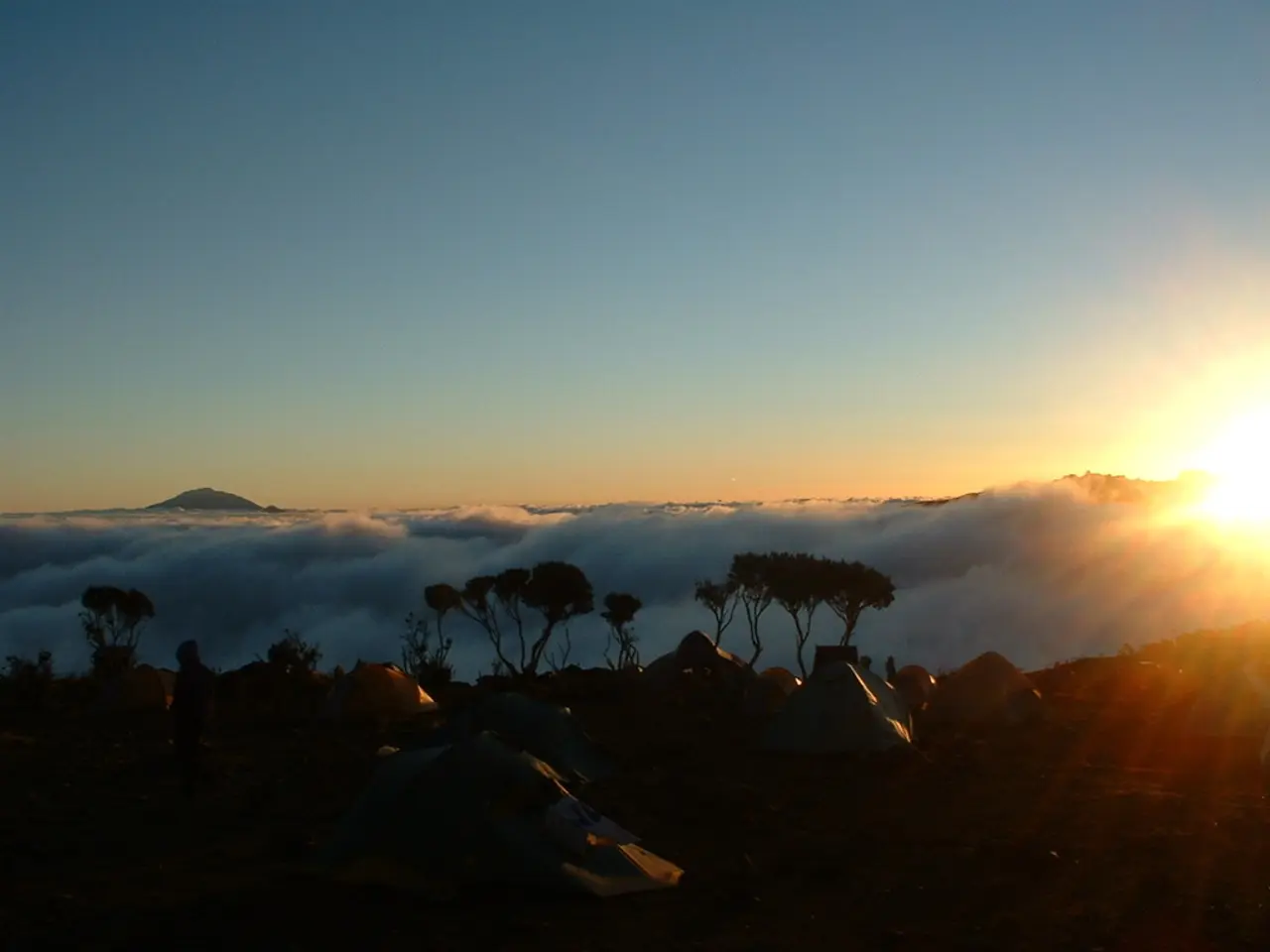Surviving Winter in the Colorado Rockies - Third Installment: Crafting a Winter Retreat Shelter
In the unpredictable Colorado Rockies, finding yourself stranded outdoors during winter can be a daunting experience. However, with the right knowledge and resources, you can build a shelter that could mean the difference between survival and hypothermia. Here are some key options, tools, and techniques to help you stay safe.
## Options for Winter Shelters
1. **Quigloo**: Similar to a quinzhee, a quigloo is a snow shelter built from a pile of snow that is hollowed out. This is a popular method used by students at the High Mountain Institute.
2. **Snow Trench Shelter**: Dig a trench in the snow, then cover it with branches and additional snow for insulation. This method provides good protection from wind and snow.
3. **Lean-To Shelter**: Find or create a slope in the snow, then place branches across it to form a roof. Cover with snow or pine needles for insulation.
4. **Bivy Sack or Emergency Blanket**: If you have a bivy sack or emergency blanket, use them to stay warm and dry. These are lightweight and can be lifesavers in emergency situations.
## Tools and Materials
- **Shovel or Skis**: For digging or moving snow. - **Branches and Pine Needles**: For building structure and insulation. - **Rope or Twine**: To secure the structure. - **Emergency Blanket or Bivy Sack**: For warmth. - **Fire Starter**: For warmth and signaling, if possible (e.g., matches, lighter, magnesium fire starter).
## Techniques
1. **Choose a Safe Location**: Look for a spot that is protected from strong winds and potential avalanches. Avoid low-lying areas where cold air can accumulate.
2. **Prepare the Site**: Clear the area of any debris and create a flat surface if necessary.
3. **Build the Shelter**: - For a **Quigloo**, pile snow, let it settle, then hollow it out. - For a **Snow Trench**, dig a trench and cover it with branches and snow. - For a **Lean-To**, place branches across a slope and cover with snow.
4. **Insulate the Shelter**: Use additional snow or pine needles to insulate the structure.
5. **Start a Fire**: If possible, start a fire outside the shelter for warmth and signaling. Use fire starters like matches or lighters.
6. **Use Emergency Gear**: If you have an emergency blanket or bivy sack, use it to stay warm inside the shelter.
Remember, building a winter shelter is a survival skill that requires patience and knowledge of the environment. Always prioritize safety and seek sheltered areas to avoid harsh weather conditions.
To create a smoke signal, build an elevated platform (if possible), prepare a fire lay using dry materials, add green pine boughs above the fire lay, and ignite the fire when needed to produce large amounts of smoke.
Building a winter shelter isn't just about enduring the cold-it's about tapping into a skill set that connects us to the natural world, testing resourcefulness, resilience, and adaptability. After building the shelter, keep ventilation holes open and free of snow, regularly check the roof for sagging or weak spots, limit the amount of snow brought inside on clothing or gear, and clear out wet areas as needed to maintain a dry environment.
Surviving an unexpected night in the wild isn't just something to endure-it's something to learn from and, maybe, even enjoy as a story to share later.
- In the Colorado Rockies, a Quigloo, a hollowed-out snow shelter, can serve as a valuable option for winter survival.
- For extra protection from wind and snow, consider constructing a Snow Trench Shelter, which involves covering a dug-out snow trench with branches and additional snow.
- A Lean-To Shelter can be fashioned by placing branches across a slope and covering them with snow or pine needles for insulation.
- If stranded outdoors, a Bivy Sack or Emergency Blanket can provide essential warmth and dryness in emergency situations.
- Essential tools for building a winter shelter include a shovel or skis for moving or digging snow, branches, pine needles, rope or twine for securing the structure, emergency blankets or bivy sacks, and fire starters such as matches, lighters, or magnesium fire starter.
- To survive a night in the wilderness, learning and applying survival skills such as building a shelter, starting a fire, and reading the environment can foster a strong sense of resilience, resourcefulness, and adaptability.
- Outdoor living, even in harsh winter conditions, can be more than just enduring; it's an opportunity to learn, grow, and embrace a lifestyle that connects us to the natural world, fostering a sense of adventure and memories to share.




